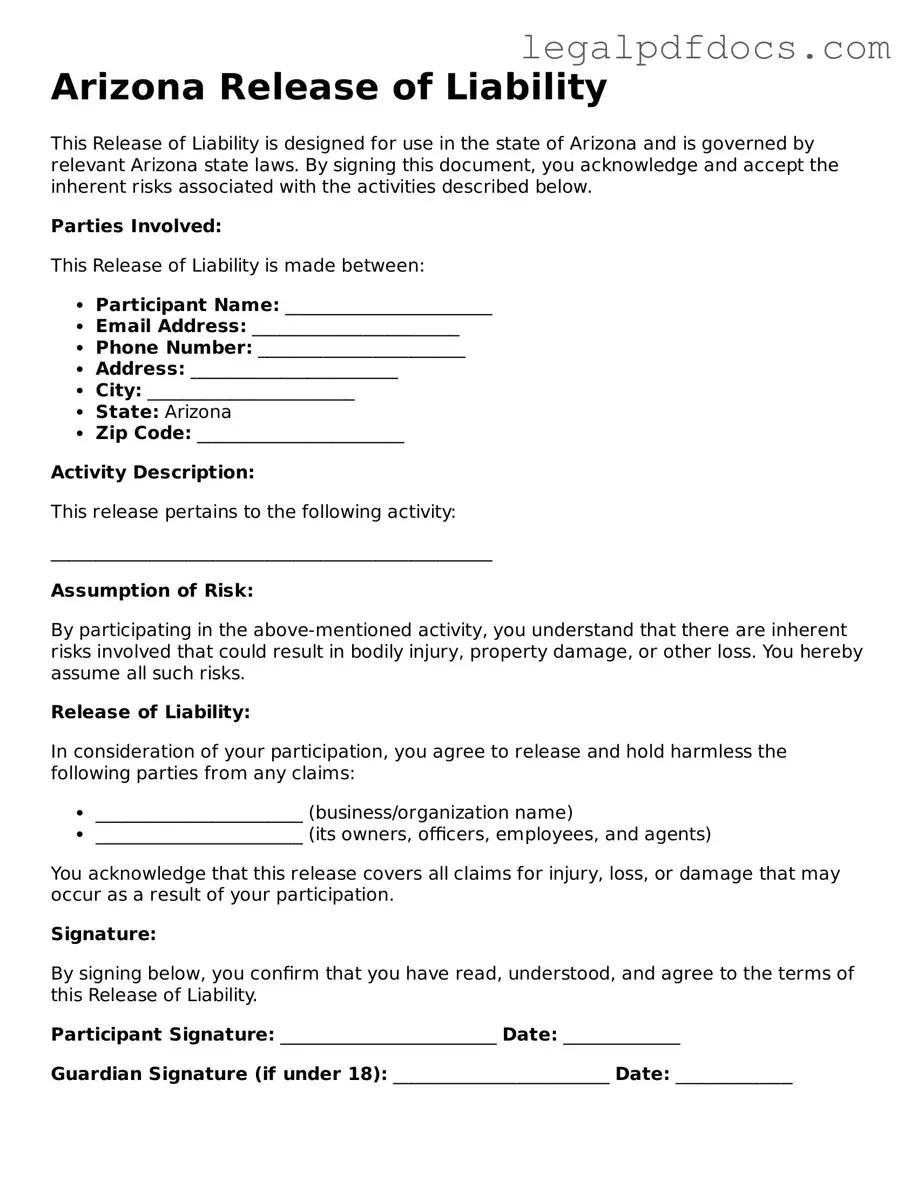Official Release of Liability Form for Arizona
The Arizona Release of Liability form is a legal document designed to protect individuals and organizations from claims resulting from injuries or damages that may occur during specific activities. By signing this form, participants acknowledge the risks involved and agree not to hold the other party responsible. If you're ready to ensure your safety and protect your interests, fill out the form by clicking the button below.
Open Release of Liability Editor Here
